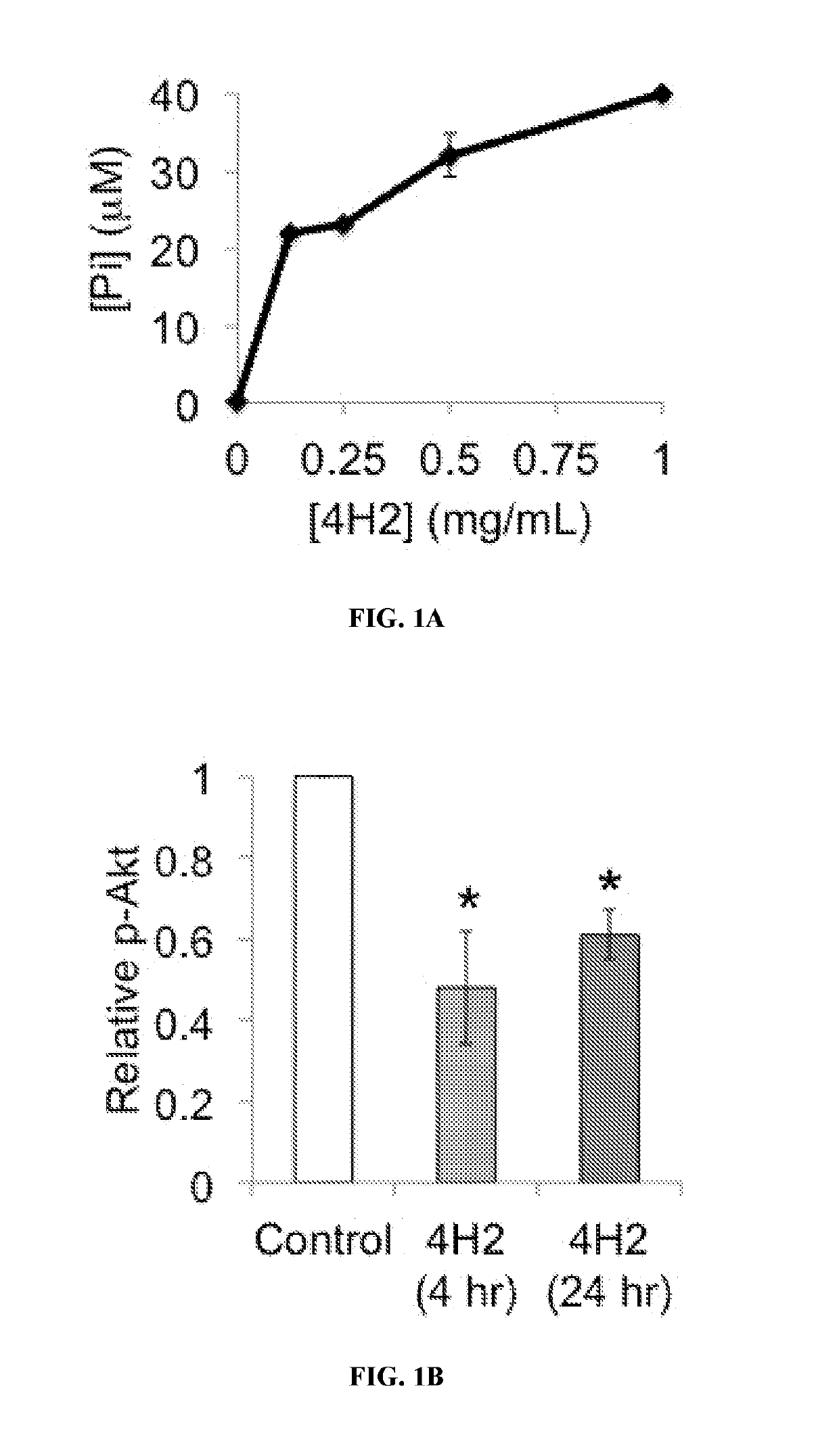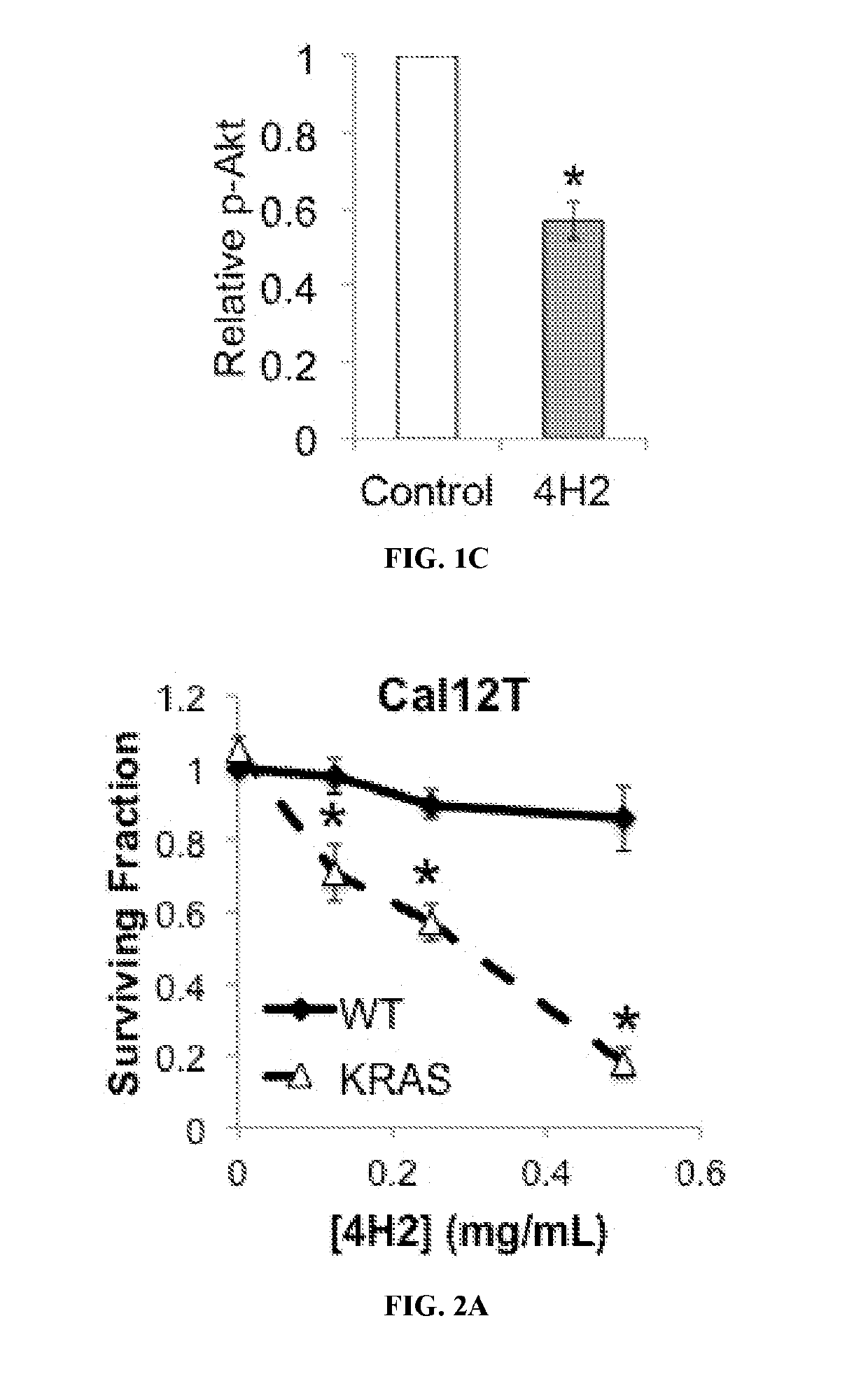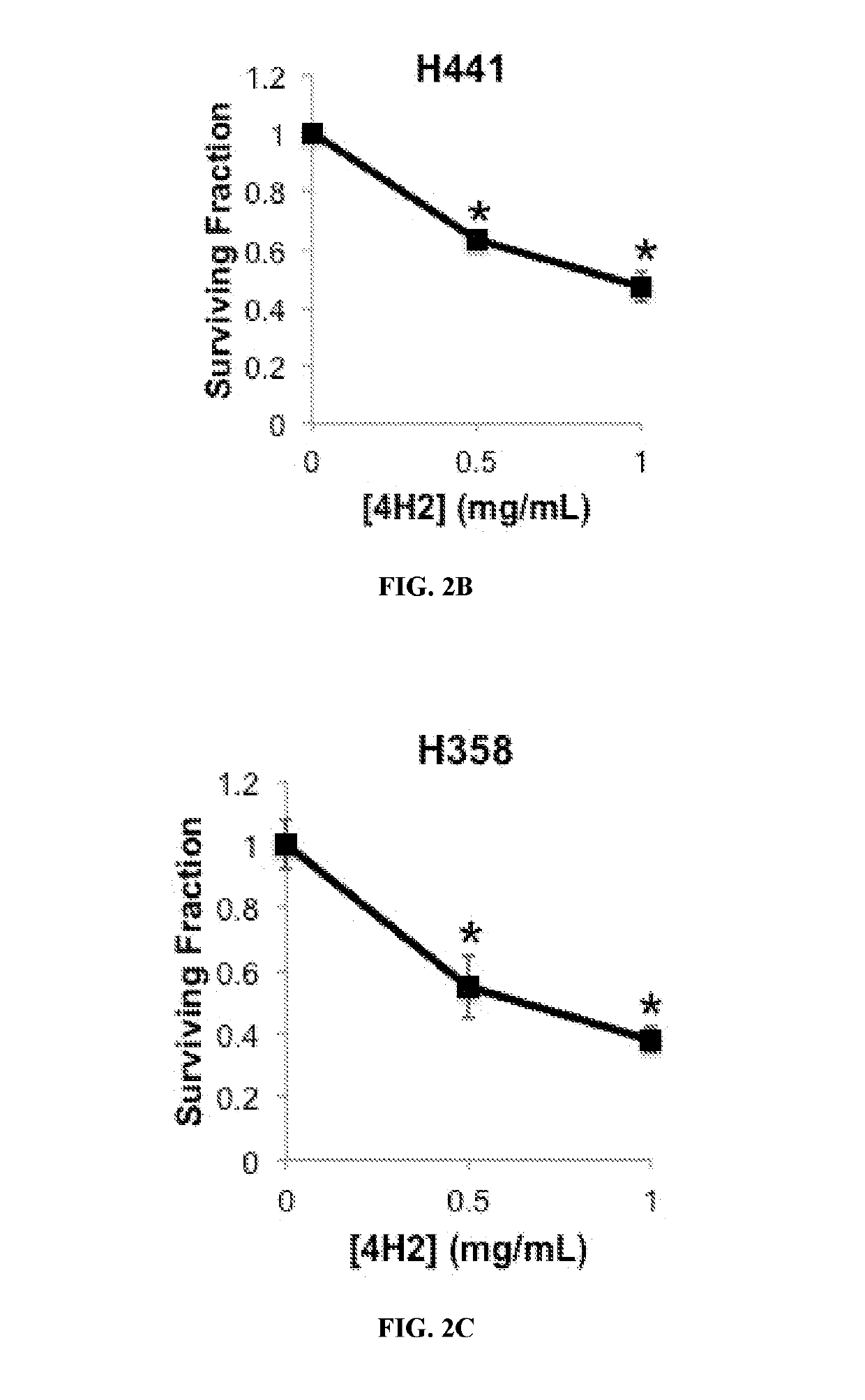Anti-guanosine antibody as a molecular delivery vehicle
a molecular delivery and anti-guanosine technology, applied in the field of drug delivery, can solve the problems of reducing the amount of molecules available for targeted delivery, insufficient passive targeting approach based on epr effect to yield meaningful gains in cancer therapy, and reducing the efficiency of nanoparticle accumulation in tumors, so as to achieve the effect of improving treatment
- Summary
- Abstract
- Description
- Claims
- Application Information
AI Technical Summary
Benefits of technology
Problems solved by technology
Method used
Image
Examples
example 1
rates Live Cells and Localizes to the Cytoplasm
[0367]A large repertoire of unusual autoantibodies produced by a malfunctioning immune system contributes to chronic inflammation and organ system damage in systemic lupus erythematosus (SLE). Anti-DNA antibodies are an important part of this lupus autoantibody profile, but their biologic functions are unclear. Tissue deposition of complexes of antibody and DNA has been well characterized in SLE, but recent findings indicate some anti-DNA antibodies may have even more direct roles in disease. Some anti-DNA autoantibodies penetrate into living cells, and nuclear-penetrating variants that cause accumulation of DNA damage have been found. Such DNA-damaging autoantibodies may promote inflammation and disease flares, but may also have unexpected beneficial effects and therapeutic applications.
[0368]The DNA-damaging autoantibodies are particularly toxic to certain cancer cells, and this may help explain why patients with SLE have lower than e...
example 2
not Definitively Localize to any Organelle
[0382]After confirming that 4H2 penetrates live cells, subcellular localization was investigated through immunofluorescence co-localization studies. Cal12T cells were treated with 4H2 (0.5 mg / mL) for one hour and were then washed, fixed, and immunostained with an Alexa488-conjugated anti-mouse IgG antibody. The Alexa488 signal was detected in the cytoplasm of the treated cells. Cells treated with 4H2 were also co-immunostained with rabbit primary antibodies against markers of early endosomes (EEA1), lysosomes (LAMP1), Golgi (RASC1), ER (PDI), and mitochondria (COX IV), followed by detection with an Alexa555-conjugated anti-rabbit IgG antibody. Use of the Alexa488 and Alexa555-conjugated antibodies to detect 4H2 and organelle markers allowed separate visualization of 4H2 and organelle locations under GFP and RFP filters, respectively. Merging of the GFP and RFP images should yield a yellow signal in areas of co-localization. DAPI co-stain all...
example 3
not Degrade DNA, but does Inhibit Akt Phosphorylation in Cells
[0385]Materials and Methods
[0386]Nucleolytic Assay
[0387]Single-stranded M13mp18 DNA (50 ng; New England Biolabs, Ipswich, Mass.) was incubated at 37° C. for 10 minutes in control binding buffer (50 mM Tris-HCl, 100 mM NaCl, 10 mM MgCl2) or binding buffer containing 0.5 mg / mL 4H2, 3E10, or 5C6. Samples were then boiled and DNA integrity was analyzed by agarose gel electrophoresis as previously described (Noble, et al. Sci Rep, 4:5958 (2014)).
[0389]Pi release from GTP after incubation with 4H2 (0-1 mg / mL) for 30 min was measured by colorimetric assay using the Innova GTPase activity kit.
[0390]Western Blotting
[0391]Cell lysates were prepared and run on 4-15% SDS-PAGE gradient gels, followed by transfer to membranes. Membranes were then blocked and incubated with the indicated primary antibodies, followed by HRP-conjugated secondary antibody and detection of bands by chemiluminescence. Band intensity measure...
PUM
| Property | Measurement | Unit |
|---|---|---|
| Fraction | aaaaa | aaaaa |
| Time | aaaaa | aaaaa |
| Composition | aaaaa | aaaaa |
Abstract
Description
Claims
Application Information
 Login to View More
Login to View More - R&D
- Intellectual Property
- Life Sciences
- Materials
- Tech Scout
- Unparalleled Data Quality
- Higher Quality Content
- 60% Fewer Hallucinations
Browse by: Latest US Patents, China's latest patents, Technical Efficacy Thesaurus, Application Domain, Technology Topic, Popular Technical Reports.
© 2025 PatSnap. All rights reserved.Legal|Privacy policy|Modern Slavery Act Transparency Statement|Sitemap|About US| Contact US: help@patsnap.com



